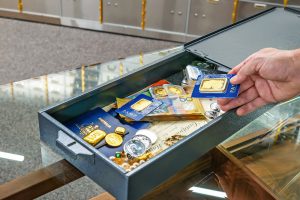Your Safe Deposit Box Checklist
Safety Deposit boxes, otherwise known as safe deposit boxes or SDBs, have re-emerged in our society as a secure way to protect your possessions and valuables, build wealth and secure a future for yourself and further generations of your family. With increased ways for you to take control of your financial well-being, and an increase in widespread natural disasters and crime rates, SDBs have been re-established as a home base for security against uncertainty.
Whether you are looking for secure storage for yourself or for your business, we all have at least a handful of items, which if we lost our lives would be adversely affected. We all know that there is more than just a few items that are vital and highly valuable, so what other items and documents should you consider? In this article, we explore your safe deposit box checklist and what items are conventionally stored in a SDB.
The Ultimate Storage Solution
Today, SDBs and privately-owned secure storage facilities have a renewed relevance by the fact that these services may offer unparalleled security and privacy, unmatched by your traditional bank hosted SDB.
Most commonly SDBs are put to use by those of us who live in areas that often come under threat by floods and fires. SDBs have also become a key component for those who choose to take control of their superannuation and manage their own self-managed super fund, as secure storage, thorough documentation and added insurance are required by law. Closer to the cities, some have turned to SDBs as a measure to protect their home contents from theft – and often choose to lease an SDB for short-term periods while away on holiday or out of town or even move their valuables to an SDB to bring down their home content insurance. Then of course, having a SDB all year round is the preferred option for most people.
Get Inspired with these SDB Checklist Ideas
Below is a list of items that you want to consider storing in a SDB. Included are items that are valuable to you personally, as well as items that fall under the categories of personal records, electronic records, legal records and business records.
Valuables:
– Collectibles
– Coins
– Stocks Certificate and Bonds
– Rare Stamps
– Medals
– Jewellery
– Precious Metals
– Other valuable items
Personal Records:
– Birth Certificates
– Health Information
– Immunisation Records
– Adoption Paperwork
– Marriage Licenses
– Divorce Paperwork
– Custody Agreement
– Death Certificates
– Army/Navy/Public Service Records and Awards
– Vehicle Titles
– Lease Agreements
– Photographs/ Video Evidence of Home Contents
– Household Inventory
– Property Deeds and Warranties
– Bank Account Numbers
– Investment Account Numbers
– Academic Transcripts
– Pet ID information
Electronic Records:
– Digital Library of Family Photographs
– Hard drives, USB Drive, CDs, DVDs and Other Storage Media
– Digital Music Library
– Education Enrolment Transcript
– Other Digital Records
Legal Records:
– Passports
– Copies of Driver’s Licenses
– List of Credit Cards and Account Numbers
– Copies of Insurance Policies
– Power of Attorney Paperwork
– Last Will and Testament
– Trust Related Documents
– Tax returns
– Contracts and other Legal Paperwork
– Insurance Information
Business Records:
– Tax File Number (TFN)
– Australian Business Number (ABN)
– Australian Company Number (ACN)
– Blueprints
– Architectural Designs
– By-Laws
– Patents, Trademarks and Copyright Paperwork
– Tax Returns
– Insurance Information

Preparing to Make the Move
Creating your own checklist will help you get your head around what is valuable enough to warrant secure storage in a SDB, but there are some other considerations that will help. If you have included any important original documents on your SDB checklist that you still require from day to day, then you will need to make a certified copy that have been witnessed and signed by a Justice of the Peace or solicitor. It is best to have 4 to 6 copies, so you never need to touch the original, and once all the copies are used you still have your original to make further copies.
Another important task is to video all your homes possessions (best done yearly) to have a record for your insurer should anything happen. You will be surprised how this cut’s through the many issues when making a claim.
One other thing that creating a SDB checklist will do is give you an idea of what size box you will require, as SDBs come in varying sizes depending on who is providing the service.
You must also keep in mind, items that shouldn’t be stored in your safe deposit box include: illegal firearms, illegal substances and narcotics, or any item that is related to a crime or a criminal offence, liquids of any nature.
Secure Storage for Your Convenience
Private Vaults Australia (PVA) is a secure storage facility and gold and silver bullion dealer based in Brisbane, where you can secure a safe deposit box for as little as the price of a cup of coffee a week and receive complimentary $20,000 insurance on any size SDB.
At PVA, we’re here to help and have included a downloadable PDF template of your safe deposit box checklist for your convenience. To learn more, contact PVA or read the PVA blog for more interesting news, tips and ideas to guide you.



2 Months Free, No long term commitment necessary.* Limited spots available.

Recent Comments